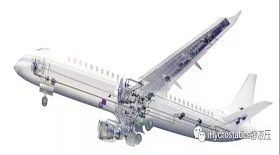The case for transmission modes
To compare different transmission modes in practical application, the cost is usually very high. Because, it not only must do the paper rehearse and make the corresponding plan, also must actually do manufacture. Demons hide in the details. Many ideas have to wait until they are actually manufactured before they get into the details and really determine the feasibility of the solution. Therefore, in many applications, limiting to the cost of design and manufacturing, the existing model is often used and not too brave to try other transmission mode.
As we all know, for the aerospace industry, safe and reliability and light weight is the most important factors. Design and manufacturing cost is not the first consideration. Therefore, the aircraft designer will certainly compare all possible transmission modes at the same time when determining the plan. Finally, the aircraft's front flap, rear flap, spoiler, tail fin, landing gear, etc., are still driven by hydraulic pressure, which also indicates that hydraulic pressure has irreplaceable advantages.
History shows that when it comes to driving technology, it's often the aviation industry that leads the way and the first to embrace new technology. If hydraulic technology is replaced on an airplane, it may change in the engineering machinery after many years. However, what can be seen is that the world's major hydraulic companies are working hard to bring the electro-hydraulic actuators that have been used in aircraft to civilian use for many years.



